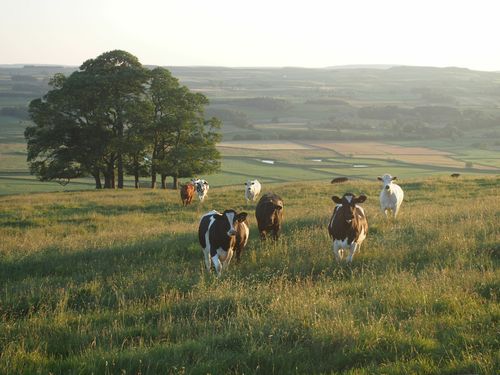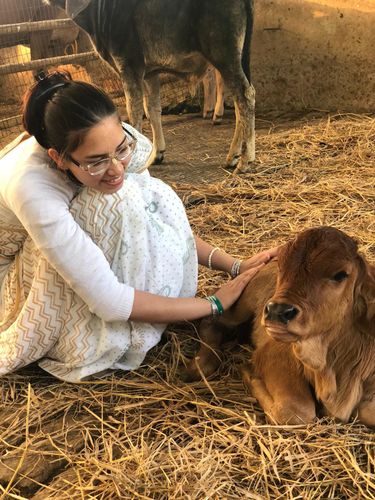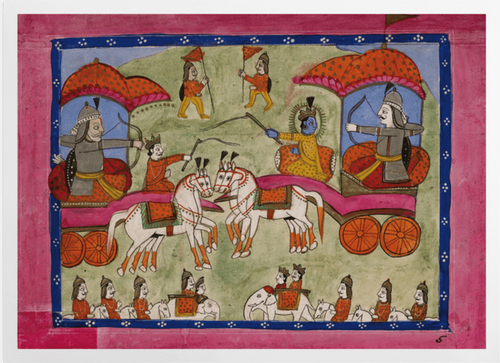Go Back

Cows, Climate Change and Clever Solutions
In many ways, we are entering a new era – a Green Renaissance, so to speak! Never has there been so much new knowledge synthesising both the wisdom of ancient tradition and the discoveries of cutting-edge science. All around us, innovative ideas are springing up and taking root, painting the canvas of tomorrow and reinventing our collective future. All we have to do now is dare to take the step – join the ranks of the pioneers and write history as we go.
The Sustainability Problem
The agriculture and energy sectors are clearly undergoing a gradual revolution. But here we thought we’d try to look into the meat and dairy industries instead, an even trickier topic. It is becoming more and more clear that they aren’t sustainable, not just environmentally but ethically, in terms of both animal and human rights. Those who work in slaughterhouses experience trauma similar to war on a daily basis. Studies show that they suffer from PTSD, PITS (perpetration-induced traumatic stress), recurring nightmares and self-loathing, and that drug and alcohol abuse, crime and violence, including domestic violence, are linked to these trades. So sooner or later, we’ll have to consider the alternatives.
Most people aren’t ready to give up milk. The good news is that cruelty-free milk is a thing now – it is being experimented in a handful of small farms around the world, such as Gita Nagari Creamery in the US, Ahimsa Dairy in the United Kingdom, and even here in New Mayapur. There, calves remain with their mothers, bulls support the farm by ploughing, producing electricity or milling flour, and retired cows live out their days happily grazing in the pastures. But most important of all, they are treated with love and respect.
Nonetheless, there are many objections to such an approach. From an environmental perspective, wouldn’t this still cause soil depletion, water pollution, deforestation, loss of wildlife biodiversity, and methane emissions? Is it economically viable to maintain a cow throughout its 20+ natural lifespan? And ethically, isn’t this still animal exploitation?
Real-World Alternatives
To tackle these questions, we turn to real-life. To begin with, slaughter-free dairy farming does not take place in large-scale industrial plants, but small organic farms. There is no chemical pollution, as manure is used instead of fertiliser and homeopathy instead of antibiotics, and petrol-run machinery is replaced by human and animal labour. Additionally, grazing that is sustainably managed enriches rather than depletes soil. In a regenerative agricultural system, atmospheric carbon is stored in the soil and taken up by the plants, and cows are necessary for that plant management.
In fact, livestock is the only solution to desertification, according to the extensive research and trials and errors of the scientist Alan Savory. Currently, two-thirds of the planet are occupied by desert and desertification is rapidly increasing. This has not only a local but global impact because the carbon that would’ve been stored in plants and soil is instead released into the atmosphere, thus making desertification a leading cause of climate change. After an unsuccessful attempt to preserve grasslands by reducing grazing, he realised that the problem isn’t too much livestock, but too little! When animals graze, they trample the grass, fertilise it, and move on, allowing the grass to start a new cycle.
Thus, the little rain that falls is adequately absorbed and retained in the soil, and paddocks where cattle have spent a few weeks sheltering for the night yield 8 to 10 times more crop. In the absence of grazing animals, grass dies, and the unprotected soil is depleted and turns to desert. Alan Savory and his wife Jodie Butterfield now share the techniques of this intelligent grazing planning and rainwater management in Africa and worldwide, are recognised and supported by the government and have won many awards. Thanks to holistic management, hundreds of thousands of rural communities in Africa who were previously on food benefits now have water and food year-round (see the documentary here). All we need to do is mimic nature!
Changing our View of Cattle Rearing
Deforestation and loss of wildlife does not necessarily have to be synonymous with cattle rearing. In Africa, livestock is fully integrated with the wildlife (protected at night by temporary tents) and even preserving their grounds. In Colombia, it is being discovered that cows thrive in woodland – they are healthier, give more milk and even produce less methane due to improved digestion. As they are moved every three days, the forest is not endangered, and everyone is benefitted.
So, what about economic losses then? If cows are neither slaughtered nor exploited for the milk industry, don’t they become a financial burden? Obviously, the fact that cows can reverse climate change is in itself an invaluable gain. But we can also take advantage of the other gifts of the cow, the excellent fertilizer that is cow manure, its strength to pull carts or plow, its gentleness for therapy, tourism, etc.
Beejom farm is an excellent model. Not only do they maintain over 130 indigenous cows, who are treated with love and whose calves drink their mother’s milk to their fill, they don’t rely on donations to cover the additional costs. Instead, the cows and bulls themselves maintain the farm: the cattle dung is used to make vermicompost, pots for seedlings (that can then be replanted in open ground along with their pot!), logs (deforestation-free fuel), organic fertilisers (gobar khad, jeevamrutham, panchagavya), pest repellents (bramhastra, agnihastra), biogas and natural incense.
As Aparna, the founder, says, “On our farm, the bulls save us, we don’t save them. They pull the carts and run the sugarcane, grain and oil chakkis [mills]. They plough our land and help water the fields too.”
The farm is fully self-sufficient: off-the-grid and solar-powered, it harvests rainwater, produces organic vegetables, grains and lentils, sells the surplus in zero-waste packaging, maintains a seed bank, and even has a school and women’s empowerment group to provide education for the farmers’ families. Even though they are not a dairy farm, and they shelter many rescued animals, they do not rely on external grants and funds to continue. Thus they tie environmental and economical sustainability together, a difficult balance to maintain.
In truth, cows are highly sensitive and intelligent creatures. They can control the amount of milk they give, the fat content of that milk, and the duration of milk production according to judgment based on their perceptions. For example, in David Finlay’s farm on the Dumfries and Galloway coast, which is experimenting with leaving calves with their mothers for longer, the cows hold back fat for their calves when taken into the milking parlour, “giving us semi-skimmed milk”, he jokes.
Cows are Loving Animals
On the other hand, this also means that cows can feel it when they’re safe and loved, which can lead them to give milk longer. For instance, in our New Mayapur farm in France, a cow has been giving milk for years without ever having a calf. In another farm in Hungary, one cow has been giving milk for eight years without a calf, and in the Gita Nagari farm mentioned earlier, it is common for cows to give milk for five years without a calf. Myth or miracle? A couple in Switzerland rescued a cow from slaughter, and she then started giving milk without having had a calf (it has been eight years). One day, they reminisce, "She looked at us with love, and the milk started to flow. We are convinced that she adopted us as her calves, and that she gave us this milk as a present.” They followed a vegan diet until then, but now cannot refuse this milk which they are also sharing with their friends. (See their story here).
These are not isolated incidents. People who are close to cows attest that strong emotional ties of affection develop between humans and cows. Brushing them and caring for them effectively reduces anxiety and depression. Cow cuddling is now even a wellness therapy! Cows make wonderful pets – they are gentle and full of affection. What about bulls? They love to work! Voluntary and dynamic, when they are well trained it is like working with draft horses. Eamonn, a farmer in County Mayo, believes we must preserve traditional knowledge and has been pleased to see his cows take to ploughing ‘like ducks to water’.
The Vedic Tradition
Talking about tradition, in the Vedic culture of Ancient India, which still survives in some parts of the world – cows are loved like members of the family. The calves even live with the children like one of them. Milk is regarded as a miracle food for the brain, and not a single drop is wasted. Indeed:
- All milk that is not drunk on the first day (or turned into cottage-cheese) is transformed into yoghurt,
- The next day the leftover yoghurt is turned into butter,
- All the leftover butter is turned into ghee (clarified butter) which can be stored for months and even years if it is very pure (this has medicinal uses in Ayurveda).
The bulls are used for ploughing, and the cow dung for fuel and fertilising the vegetable gardens – thus everything and everyone has a function, and is part of a holistic, sustainable system. So yes, the planet can be saved. We can eat more sustainably. And cows – shockingly – can reverse climate change. All we need to do is step into nature’s design and we will see all around us only solutions, not problems, as Cyril Dion discovered in his award-winning documentary, Tomorrow. We have nothing to lose and everything to gain.
About the Author

Lalita Krishna Dasi
Lalita Krishna dasi is a teacher in Mayapur, India. Both Mayapur and New Mayapur are close to her heart, so whenever she gets the chance she tries to do little sevas for New Mayapur like translating, writing and designing posters. She has a Bachelor of Science in Sociology and English and a PGCE (Teaching degree). She loves nature and learning how to live in harmony with it.
Read More

Bhagavad-Gita - Chapter 4, Verse 2
#TempleHow relevant can the Bhagavad-Gita be in our modern daily life? As tradition tells us, it has been spoken more than 5000 years ago by Lord Sri Krishna, at a place called Kurukshetra. Is it simply a di...
Rural Entrepreneurship for Youth and New Mayapur
#CommunityFor the past three years from 2021 to 2024, ARGM, or New Mayapur, has been participating in the Erasmus project _"Rural Entrepreneurship for You(th)."_ As the title suggests, this Erasmus-funded initi...